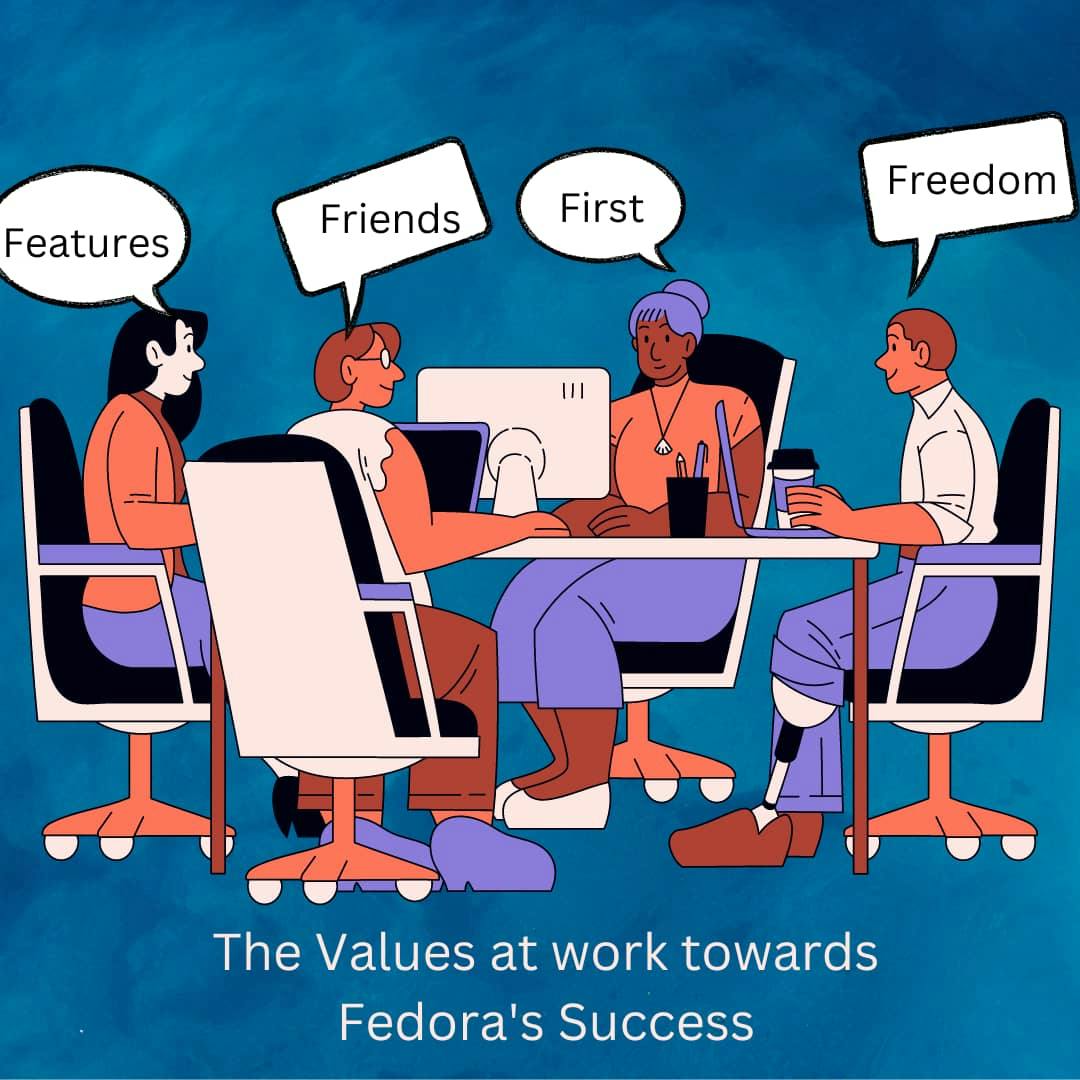This is Fedora!
Introducing the Operating System (OS) beyond Windows and macOS
Think of Fedora as a Lego set for your personal computer. It provides the building blocks (the Linux Kernel and Open Source Software) for your computer and lets you customize it to your needs.
Fedora (developed by the Fedora Project), follows it's own release schedule with a new version approximately every six months. Fedora is primarily sponsored by Red Hat (an enterprise open-source solutions company).
Some versions of Fedora pass through testing before being served as the base for commercially supported Red Hat Enterprise Linux (RHEL).
Understanding Fedora
The Fedora Project
The Fedora Project is a center for innovation in the Free and Open-Source Software (FOSS) community. With an emphasis on the freedom to:
Read and study how things work,
Run or use anyhow you want,
Review and revise, and
Redistribute and share changes
This center operates as a community, that is, contributors of all kinds come together to advance the ecosystem (for example, the FOSS and Linux ecosystem) and make it easy for users to do stuff with them. It has been around for over 20 years.
The Fedora Linux: The free and customizable OS
Image Source: Damian Stern
Fedora Linux is a free and customizable Operating System, unlike Windows and macOS. It is built on the following philosophies:
Free and Open Source: It does not cost anything and the code is freely available for anyone to see and modify.
Built on Linux Kernel: This is the core of the Linux Operating System. It directly manages your computer's hardware including memory and CPU.
Customization: Just like Android OS for phones, Fedora allows you to personalize your experience by installing different software and desktop environments.
The Power of Community
What makes the Fedora community special?
The Fedora community involves thousands of individuals with different views and paths, but together we share four common values. These values are called the "FOUR FOUNDATIONS". They are Freedom, Friends, Features, and First.
To keep the community up on what's happening in Fedora, the following are some of the tools used:
GitLab: A version control system that is used for versioning, collaborating, and saving works so others can see and modify.
Fedora Pagure: The community's own open-source software hosting system.
Matrix/Element: The communication tool used during the contribution phase of the Outreachy internship program.
Fedora Calendar, Fedora Magazine, and Discussion Forum.
Fedora's Core Values
The FOUR FOUNDATIONS: A Look at Fedora's Guiding Principles

The values are interconnected and contribute to Fedora's success.
By prioritizing liberty and open-source values, they promote teamwork (Freedom). This collaborative nature enables developers to create resourceful tools (Features), attracting a diverse community of professionals (Friends). The community, in turn, provides practical feedback and contributions, pushing the boundaries of innovation (First).
From Software Development to Outreachy: The Inner Workings of Fedora
Fedora Projects involves the following:
Development and Innovations
a) Software Development: Developers are on the bleeding edge to offer the latest version of the software editions(workstation, server, cloud and so on).
b) Package Management: Maintaining a vast repository of software packages that users can easily install.
c) Bug fixing and security.
Continuous Improvements
a) Release cycle: By following a regular release cycle, a new version is released during a specific time.
b) Testing and Feedback before a new release, to ensure stability and compatibility.
c) Spins and variants: Fedora Project offers various “Spins”- versions for specific uses like gaming and design.
Community and Collaboration
a) Open-Source Contributions.
a) Forum Discussion and Support.
c) Events and Outreach programs like providing mentors during the Outreachy Internship, Flock to Fedora conferences (Fedora Project’s annual contributor conference) etc.
My Fedora Experience
What excites me most about Fedora?
It has a patient and supportive community that is open and welcoming to beginners. The community and development of Fedora Linux are open to coding and non-coding (Graphic Designers, Social Media Managers, Product/Project Managers, Writers, Translators, etc) professionals.
The aspect of Fedora that seems challenging.
The software and new tools that I just got introduced to. Linux feels like new terrain to me. The learning curve is a little bit steep, so I will be banking on fellow newbies and experienced community members to put me through the learning process.
Joining the Fedora Family
Advice to Prospective Outreachy Applicants.
From my contributing stage experience, I will advise prospective applicants to read docs, make research and listen attentively to mentors. It will save you time and make your efforts fruitful.
Make provisions for tools and resources like a good ISP provider, a month-long internet subscription and a very good PC. These resources will help with accomplishing your goals as a contributor.
Prospective applicants are also advised to be open to new forms of communicating, collaborating, and learning. They must be ready to collaborate with people of all kinds. They will have to contribute and receive feedback to move the ecosystem forward.


